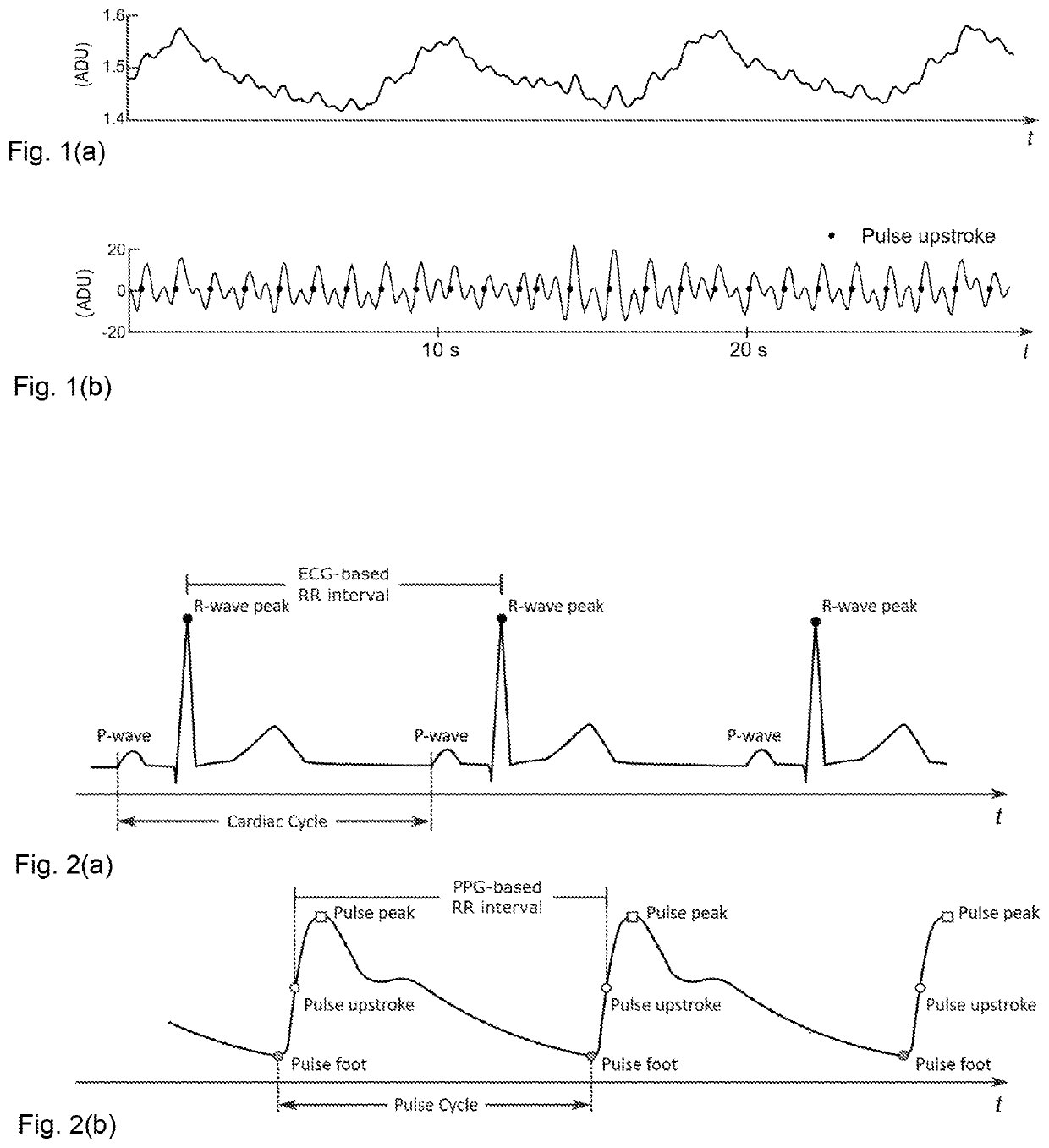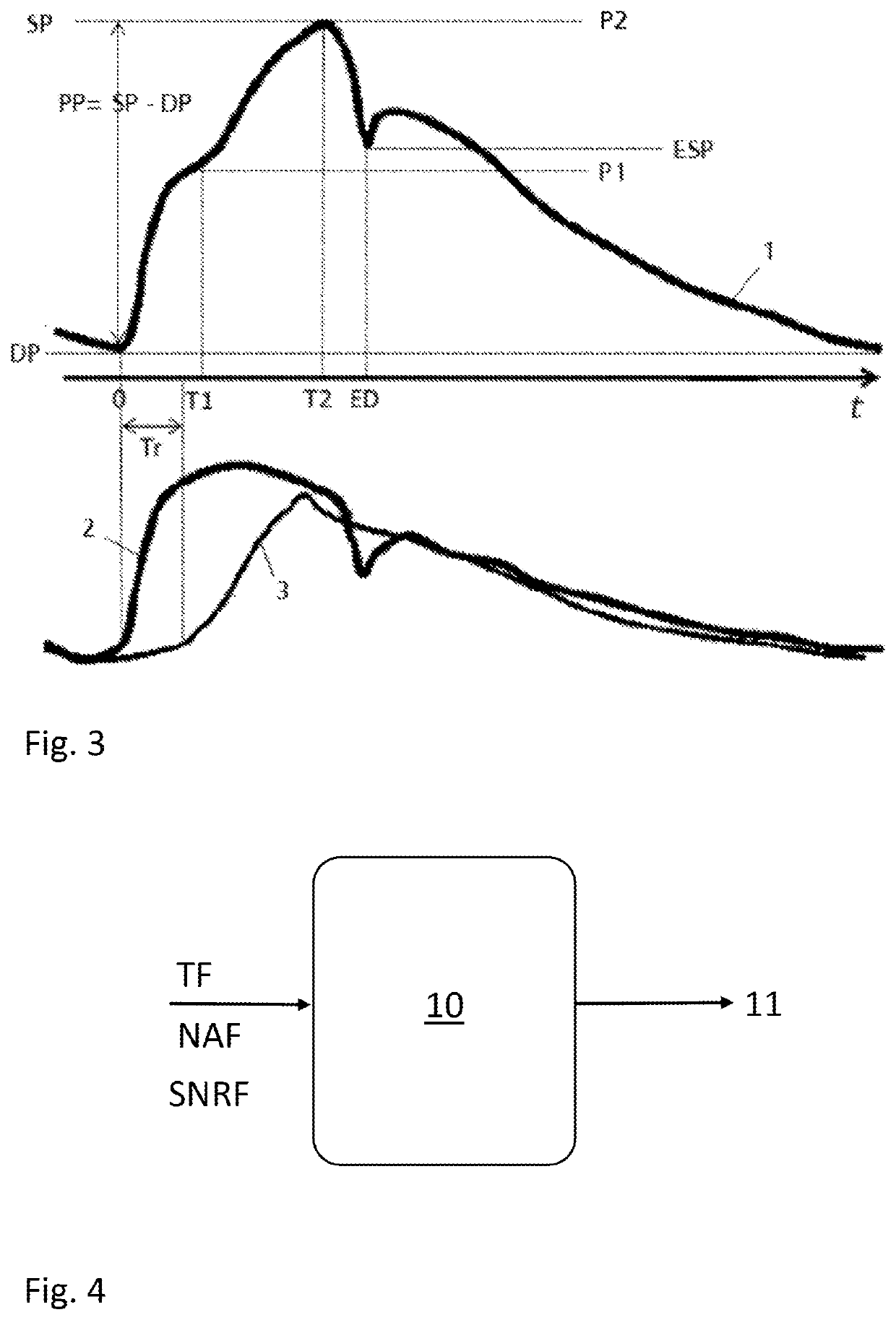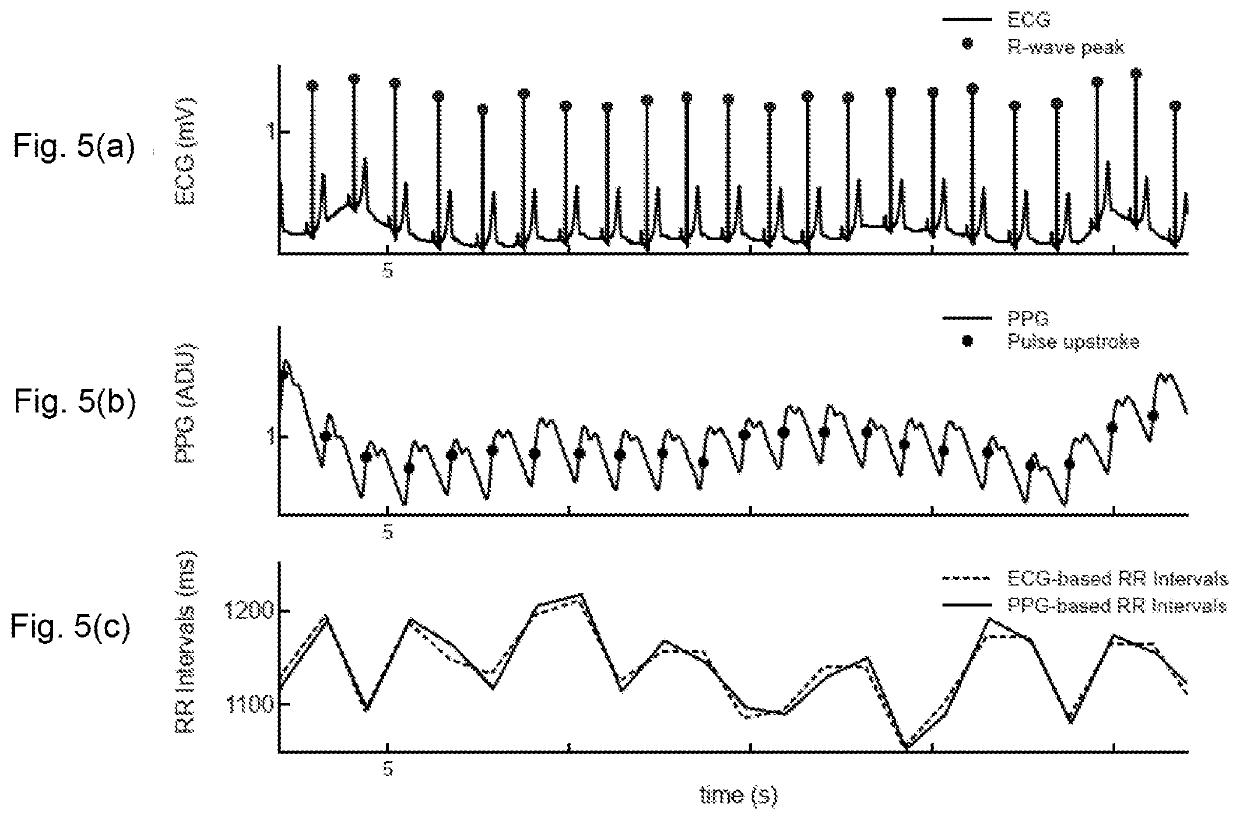Method for classifying photoplethysmography pulses and monitoring of cardiac arrhythmias
a technology of photoplethysmography and pulses, applied in the field of method for classifying photoplethysmography pulses and monitoring cardiac arrhythmias, can solve problems such as pathological ppg pulse morphology
- Summary
- Abstract
- Description
- Claims
- Application Information
AI Technical Summary
Benefits of technology
Problems solved by technology
Method used
Image
Examples
Embodiment Construction
[0029]In describing and claiming the present disclosure, the following terminology will be used.
[0030]The expression “cardiac contraction” corresponds to the onsets of ventricular contraction of the heart, represented by R-wave peaks in the ECG waveform (black dots in FIG. 2a).
[0031]The expression “cardiac cycle” corresponds to the duration between the two successive cardiac contraction onsets (P-wave onsets) of the ECG signal (see FIG. 2a).
[0032]The expression “ECG-based RR intervals” corresponds to the resulting time series representing the time difference between successive cardiac contractions (dashed line in FIG. 5c).
[0033]The expression “ECG signal” corresponds to the time series of ECG samples.
[0034]The expression “PPG-based RR intervals” corresponds to the resulting time series representing the time difference between successive cardiac contractions (solid line in FIG. 5c). “PPG-based RR intervals” are sometimes also called “PPG-based inter-beat-intervals”.
[0035]The expressi...
PUM
 Login to View More
Login to View More Abstract
Description
Claims
Application Information
 Login to View More
Login to View More - R&D
- Intellectual Property
- Life Sciences
- Materials
- Tech Scout
- Unparalleled Data Quality
- Higher Quality Content
- 60% Fewer Hallucinations
Browse by: Latest US Patents, China's latest patents, Technical Efficacy Thesaurus, Application Domain, Technology Topic, Popular Technical Reports.
© 2025 PatSnap. All rights reserved.Legal|Privacy policy|Modern Slavery Act Transparency Statement|Sitemap|About US| Contact US: help@patsnap.com



